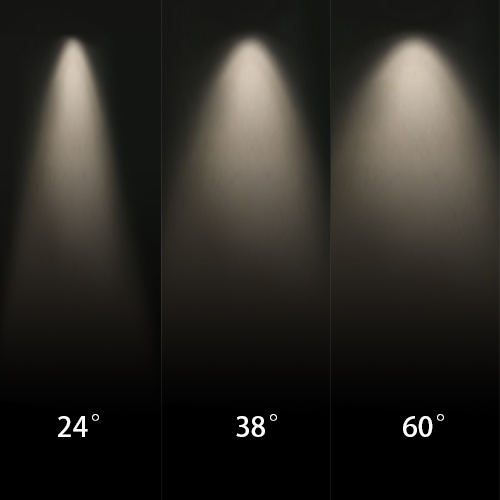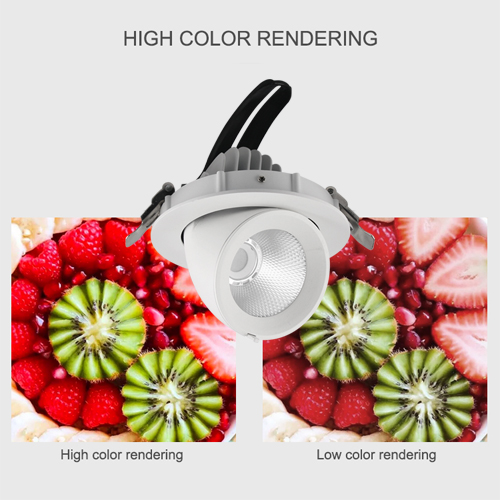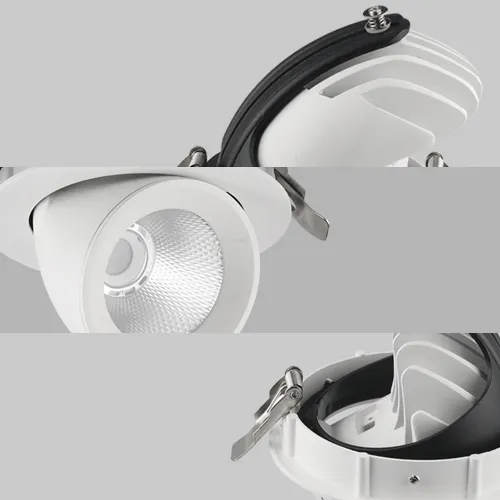什么是色温?为什么它对 LED 照明很重要?
Color temperature, as an important indicator to measure the color tone of light sources, has always played a key role in lighting design. It not only affects visual perception, but also has a profound impact on people's emotions, production efficiency and comfort in daily life. Especially today, with the increasing popularity of LED lighting fixtures, color temperature has become one of the core standards for measuring the quality of lamps and choosing suitable lighting. Since LED light sources have different light-emitting mechanisms and characteristics from traditional light sources, the adjustment and selection of color temperature have become particularly important in LED lighting.
This article will answer the questions of dddhhhwhat is color temperaturedddhhh and dddhhhwhy it is important for LED lightingdddhhh in detail, and will deeply explore the working principle of color temperature, its impact on the environment and its application in LED lighting design, to help readers better understand and choose the appropriate color temperature to optimize the lighting effect.

What is color temperature?
Color temperature is a physical quantity that describes the color of a light source, usually in Kelvin (K). The high or low color temperature represents the degree of warmth or coldness of the color tone of the light source. When the color temperature is low, the light source appears warm yellow or red, giving people a warm and relaxing feeling; when the color temperature is high, the light source appears cold white or blue, usually giving people a cool and bright feeling. The higher the color temperature, the colder the light color, the closer it is to white light and blue light; the lower the color temperature, the warmer the light color, the closer it is to red and yellow.
Color temperature is defined by simulating blackbody radiation. Blackbody radiation is an idealized physical model that refers to an object that perfectly absorbs all radiation and whose radiation spectrum is determined only by temperature. The color temperature of a blackbody is simulated by heating it to different temperatures. When the temperature of a blackbody increases, the radiated light changes from red to yellow, then to white, and finally to blue. The unit of color temperature dddhhhKelvindddhhh is used to represent this temperature.
What are the classifications of color temperature and common color temperature values?
According to the color temperature, the color of the light source can be divided into the following main types:
1. Warm light (low color temperature, about 2700K-3000K)
The color temperature of warm light is low, usually between 2700K and 3000K, giving people a warm and comfortable feeling. The light emitted by traditional incandescent lamps is in this color temperature range, so it is often used in places such as home lighting, restaurants and bedrooms where a relaxing atmosphere needs to be created.
2. Neutral light (medium color temperature, about 3500K-4500K)
The color temperature of neutral light is between warm light and cold light, about 3500K to 4500K. This light color is close to the color of natural light and is suitable for places such as offices, conference rooms and shops. It can provide sufficient brightness without making people feel too glaring.
3. Cool light (high color temperature, about 5000K-6500K)
The color temperature of cool light is higher, generally between 5000K and 6500K, showing a bright blue-white color. Cool light is often used in places such as work lighting, hospitals and laboratories that require high brightness and can improve alertness. Cool light helps to improve concentration and energy, so it is often used in environments that require efficient work.
In modern lighting, LED light sources have become an important tool for adjusting color temperature due to their high efficiency, low power consumption and flexible color temperature adjustment capabilities. Especially driven by intelligent lighting technology, the color temperature adjustment of LED lamps has received more and more attention and can be flexibly adjusted according to different needs and environments.

Why is color temperature important for LED lighting?
The importance of color temperature to LED lighting is mainly reflected in the following aspects:
1. Affecting visual comfort and health
Color temperature has an important impact on the comfort of the human eye. Too high or too low color temperature will affect the adaptability and comfort of the eyes. Long-term exposure to unsuitable color temperature may cause visual fatigue, and even headaches, dry eyes and other discomfort symptoms. Cold light (high color temperature) can make people more alert, but long-term use can make the eyes uncomfortable. Warm light (low color temperature) can create a relaxing and comfortable environment, suitable for long-term reading or rest. Therefore, when choosing LED lighting, the choice of color temperature directly affects the user's visual experience and physical health.
2. Influence on emotions and psychological state
Color temperature is also closely related to people's emotions and psychological state. Cold light can stimulate the brain, help maintain alertness and improve productivity, so it is suitable for offices, learning spaces and other environments that require concentration. Warm light can help people relax, relieve stress, and help create a warm and comfortable family atmosphere. For example, using warm light with a lower color temperature at night can help soothe the body and mind and prepare for sleep.
3. Influence on lighting effects and environmental atmosphere
Different color temperatures can help lighting designers adjust the atmosphere according to the different needs of the scene. For example, in a restaurant, warm light with a low color temperature can create a warm and romantic dining atmosphere; while in an office space, cold light with a higher color temperature can improve work efficiency and keep employees at a high level of concentration. The color temperature adjustment function of LED lamps allows designers to flexibly control the color of light in different environments, ensuring that the lighting effect is in line with the space function and design concept.
4. Affecting the color presentation of objects
Color temperature not only affects the light itself, but also affects the color presentation of the object irradiated. Under a high color temperature light source, the color of the object looks colder, with a clear blue or white bias; while a low color temperature light source makes the color of the object warmer, showing a yellow or red color cast. Therefore, when choosing LED lighting, the choice of color temperature determines the color presentation of objects in the space, especially for display, retail and art lighting.
5. Improve energy efficiency and adjustment flexibility
Compared with traditional light sources, LED lighting has higher energy efficiency and stronger flexibility, especially in the application of adjusting color temperature. Modern LED lamps can not only provide a variety of color temperature options, but also achieve more precise color temperature changes by adjusting current and chip control. This flexible adjustment capability enables LED lighting to provide the best lighting solution according to actual needs. Whether in home, office or commercial space, it can flexibly adapt to environmental changes and achieve the best lighting effect.

Does color temperature affect the design of LED lighting fixtures?
In the design of LED lighting fixtures, the selection and adjustment of color temperature have an important impact on the structure, optical components and electrical control system of the lamps. In order to achieve different color temperature changes, LED lamp designers need to fully consider the following aspects:
1. Optical component design: Use color temperature filters to change the color temperature of LED light sources, or choose different color temperature LED chip combinations to accurately control the output light tone.
2. Drive circuit and dimming system: LED lamps are usually equipped with a dimming system that allows users to adjust the color temperature according to actual needs. The dimming drive circuit controls the light-emitting effect of the LED by changing the current, thereby changing its color temperature. With the development of smart home technology, more and more LED lamps provide intelligent dimming functions. Users can adjust the color temperature of lamps through mobile phone APP, voice assistants, etc. to meet different time and space requirements.
3. Heat dissipation and lifespan: Changes in color temperature are not only adjustments to the visual experience, but also affect the thermal management and lifespan of LED lamps. LEDs with high color temperatures usually generate more heat, so a more efficient heat dissipation system is required to ensure the stability of the LED chip and extend the lifespan of the lamp. When designing LED lamps, the balance between color temperature adjustment and heat dissipation system must be considered comprehensively to ensure optimal performance.
Huari Lighting Co., Ltd. is a professional LED lighting manufacturer located in China, offering innovative and affordable lighting solutions. Founded in 1996, we have been producing high-quality LED products for over two decades. Our factory, covering 92,000 square meters, produces over 1 million units of LED lighting each month. We specialize in a wide range of products, including LED downlights, track lights, ceiling lights, cabinet lighting, and LED bulbs. All of our products are manufactured in accordance with CE, RoHS, and ISO 9001 standards, ensuring the highest levels of quality and safety. Whether you are looking for wholesale LED lights, bulk discounts, or customized solutions, Huari Lighting provides the best options for your business at factory-direct prices.
